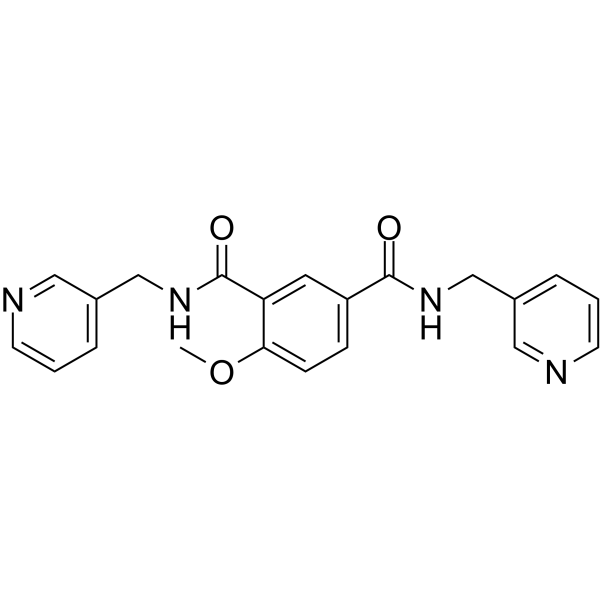The receptor antagonist picotamide inhibits adrenergic and thromboxane-induced contraction of hyperplastic human prostate smooth muscle.
Martin Hennenberg, Marijan Miljak, Daniel Herrmann, Frank Strittmatter, Sebastian Walther, Beata Rutz, Yasemin Hocaoglu, Thomas Kunit, Andrea Schreiber, Karl-Erik Andersson, Christian G Stief, Christian Gratzke
文献索引:Am. J. Physiol. Renal Physiol. 305(10) , F1383-90, (2013)
全文:HTML全文
摘要
Inhibition of prostate smooth muscle contraction is an important strategy for medical treatment of lower urinary tract symptoms (LUTS). Besides α1-adrenoceptors, prostate smooth muscle contraction is induced by activation of thromboxane (TXA2) receptors (TXA2-R). Here, we examined the effects of the TXA2-R antagonist picotamide on contraction of human prostate tissue. Prostate tissues were obtained from radical prostatectomy. The effects of picotamide (300 μM), L-665,240 (3 μM), and seratrodast (3 μM) on U46619-, electric field stimulation- (EFS-), phenylephrine-, and norepinephrine-induced contractions were studied in organ baths. Expression of TXA2-R and TXA2 synthase (TXS) was examined by fluorescence stainings. Picotamide, seratrodast, and L-655,240 inhibited concentration-dependent contractions induced by the TXA2 analog U46619. Picotamide, but not seratrodast or L-655,240, inhibited frequency-dependent contractions induced by EFS. Picotamide inhibited concentration-dependent contractions induced by norepinephrine or by the selective α1-adrenoceptor agonist phenylephrine. In prostate strips, where only submaximal contraction by a low dose of phenylephrine was induced, application of U46619 raised tone to maximum phenylephrine-induced tension. Immunoreactivity for TXA2-R and TXS was observed in the stroma and in epithelial cells of glands. Colocalization of both immunoreactivites was observed with the smooth muscle markers calponin and α-smooth muscle actin, with the epithelial marker pan-cytokeratin, and with prostate-specific antigen in the stroma and glands. The receptor antagonist picotamide inhibits α1-adrenergic, TXA2-mediated, and EFS-induced contractions in the human prostate. To the best of our knowledge, this is the first antagonist able to inhibit two different contraction systems in the prostate.
相关化合物
| 结构式 | 名称/CAS号 | 分子式 | 全部文献 |
|---|---|---|---|
 |
4-甲氧基-N,N'-二(3-吡啶甲基)-1,3-苯二甲酰胺
CAS:32828-81-2 |
C21H20N4O3 |
|
Antivasoconstrictor and antiaggregatory activities of picota...
1997-11-01 [Thromb. Haemost. 78(5) , 1385-91, (1997)] |
|
Determinants of fibrinogen in an Italian population sufferin...
1998-08-01 [Haematologica 83(8) , 701-7, (1998)] |
|
Thromboxane inhibition improves renal perfusion and excretor...
2003-07-02 [J. Am. Coll. Cardiol. 42(1) , 133-9, (2003)] |
|
8-isoprostane F2α up-regulates the expression of type 5 phos...
2010-12-01 [BJU Int. 106(11) , 1794-8, (2010)] |
|
Treatment of aura: solving the puzzle.
2006-05-01 [Neurol. Sci. 27 Suppl 2 , S96-9, (2006)] |